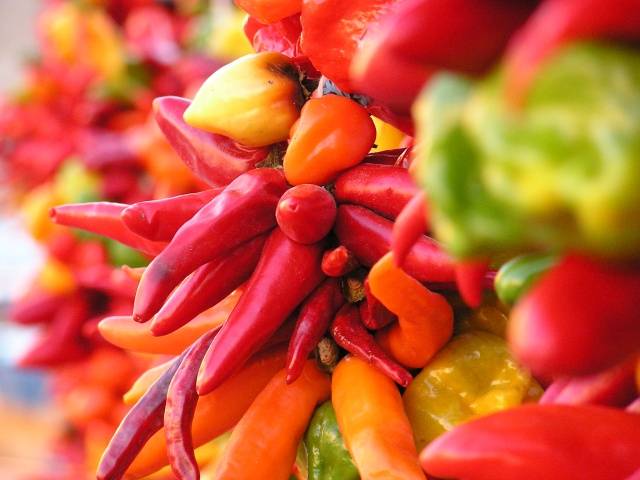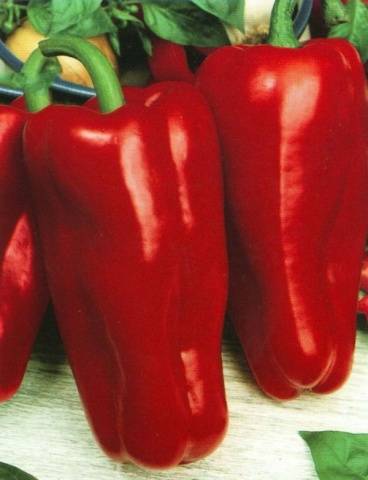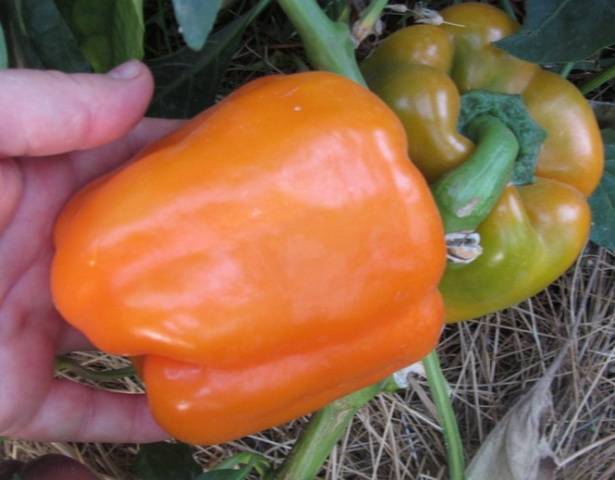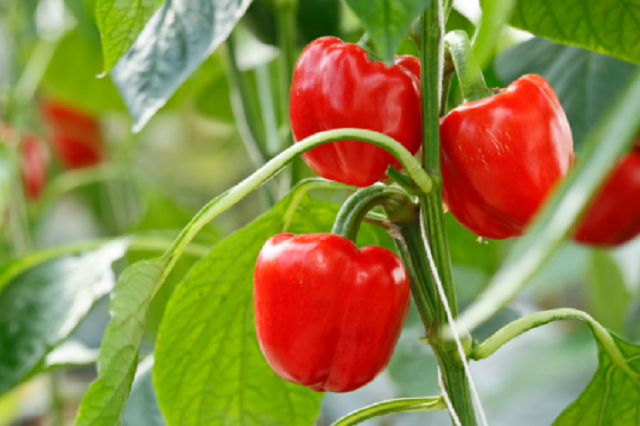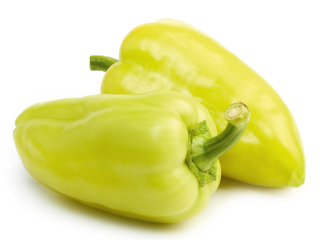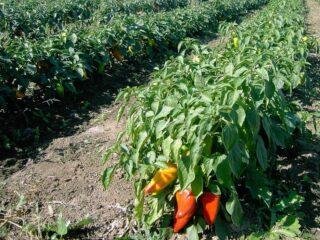Content
Just half a century ago, there were no more than a hundred varieties of bell peppers; only pale green and red fruits were known. To date, breeders have developed more than a thousand of the best varieties and hybrids of this healthy and tasty vegetable. Nowadays there are peppers of different tastes: sweet, sweet and sour, bitter, as well as multi-colored varieties: yellow, red, orange, green and purple, even white peppers are quite common.
Bell pepper is a bit of a capricious crop.:
- it is planted only by seedlings;
- prefers loose, chernozem soils;
- loves warmth and moisture;
- cannot develop normally without sufficient sun;
- has fragile shoots that need to be tied up and pinched.
Despite all this, breeders managed to develop a lot of unpretentious varieties of peppers, the best of which will be presented below.
What are the differences between pepper varieties?
Unpretentiousness is not the only quality that varieties selected for cultivation in the garden or country house should have. No less important for plants:
- resistance to various diseases;
- ability to withstand temperature drops;
- taste qualities;
- commodity characteristics of vegetables;
- ripening time.
Early ripening varieties are most suitable for the northern regions of the country and the Urals. The fruits of such peppers will have time to ripen in a couple of months of a short and cold summer. Moreover, it is early varieties give the most abundant harvests, peppers have good taste, and are suitable for growing both in greenhouses and in open ground.
In the south of the country, early or mid-season varieties and hybrids are also most often grown. But in regions with long, warm summers, peppers with late ripening periods can also be grown. They are less productive than early ones, but fresh vegetables will grow in the beds until the first frost - mid-October.
How to grow peppers correctly
Bell pepper varieties that do not require special care still require some mandatory steps:
- Planting in the ground or in a greenhouse using seedlings. Seedlings must be prepared 1.5-2 months before. Seeds are sown in large boxes and then planted in individual containers.
- Preliminary soil preparation: fertilization, digging, disinfection.
- Young plants should not be exposed to low temperatures; even resistant varieties are best covered at night with thick film or special agrofibre.
- It is important to know when to harvest - the technical maturity of peppers is determined by their color. Often the red fruits painted on the seed packet can be picked when they have a green tint. Such vegetables are quite suitable for consumption and contain all the necessary vitamins and substances. During storage, you may notice that the color of the peel changes - this indicates the biological maturity of the vegetable.
"Red Square"
The variety is an early ripening variety - the first fruits can be eaten 110 days after planting the seeds. The bushes grow small, their height reaches 70 cm. The peppers themselves have the shape of a cube with clear edges. Inside, the vegetable is divided into four chambers with seeds.
The color of the ripe fruit is bright green, but after storage it changes to scarlet. The wall thickness reaches 9 mm, which makes the fruit very tasty and juicy. The mass of each vegetable is at least 280 grams.
The plant is resistant to most viral diseases characteristic of nightshade crops. Ripe peppers tolerate transportation well and can be stored for a long time.
"Ivanhoe"
“Ivanhoe” is considered one of the most unpretentious varieties. This pepper grows in small bushes; it does not need to be tied or pinched, which greatly simplifies caring for the plants.
The crop is early ripening, the first vegetables can be eaten already at the stage of technical maturity - on the 105th day after sowing the seeds.
The fruits grow small, weighing up to 120 grams. The peel is colored at first milky white, and after full ripening it acquires a scarlet color. The wall thickness ranges from 5.5 to 6 mm. The pepper is cone-shaped, the vegetable is divided into two or three chambers, and there are many seeds inside.
The Ivanhoe variety is valued primarily for its commercial qualities - it tolerates transportation well, is stored for a long time, and the harvest consists of smooth and even fruits.
"Funtik"
The semi-determinate variety of bell pepper, “Funtik,” ripens by the 110-120th day after planting the seeds. The bushes are compact, their height ranges from 50-70 cm. The plants have a lot of foliage and side shoots, as well as a large number of ovaries. On each pepper bush, about 17 fruits ripen at the same time.
The fruits have a cone-shaped, slightly uneven shape. The variety is very unpretentious - it resists diseases and verticillium wilt; the crop can be grown both in the garden and in a closed greenhouse.
"Czardas"
The determinate variety of sweet pepper – “Czardash” – is a high-yielding variety. Up to 18 fruits can be harvested from one compact bush. The peppers are cone-shaped, each weighing up to 220 grams. The wall thickness is 6 mm.
Ripe vegetables are orange-red in color. The ovaries on low bushes appear in bunches, the plant becomes very beautiful during the ripening period of the peppers.
The variety is not infected by many viruses and diseases and can withstand worsening weather conditions. "Csardas" can be grown both in a greenhouse and in open ground. Vegetables are suitable for both canning and fresh consumption.
"Ox Ear"
The crop is mid-season; the first vegetables can be harvested already on the 130th day after planting the seeds for seedlings. The variety is suitable for growing in open ground and for planting under film in a greenhouse.
The bushes grow small, the peppers themselves are medium in size - length is 16 cm, and weight is 200 grams. The color of the fruit is bright green, becoming red when fully ripe. The walls of the vegetable are quite thick - up to 8 mm, which makes the pepper of this variety very juicy and “meaty”.
Despite their juiciness, vegetables can be stored for a long time without losing their elasticity. Ripe peppers have a cone-shaped elongated shape with slightly corrugated skin.
The fruits can be canned and added to various dishes and salads.
"Atlant"
Belongs to those rare varieties of bell peppers that love thickened landing. This culture will take root well in a cramped summer cottage, in a small greenhouse or a film tunnel.
Thanks to its high yield, Atlant has become a favorite of many gardeners - it produces consistently high yields. The fruits themselves are quite large - their length is 26 cm and their weight reaches 250 grams. The thickness of the walls of the fruit can reach up to 11 mm, which makes the pepper very juicy and tasty.
"Eroshka"
The mid-early variety bears fruit on the 120th day after planting the seeds for seedlings. The bushes grow very small - their height reaches only 50 cm. This does not prevent the Eroshka variety from being considered one of the highest yielding. The plant produces fruits in unison; about 16 ripe peppers can be picked from one bush at a time.
The shape of the vegetable is similar to a cube with weak ribs; inside it is divided into four chambers filled with seeds.
The fruits are pale green at first and turn red as they ripen. The plant is resistant to various diseases and parasites, does not require complex care, and can be grown in any way (in the garden or under a film). The fruits have excellent taste characteristics and can be used in any form.
"Lemon Miracle"
A variety with very beautiful, bright yellow fruits. The plant bears fruit early - on the 112th day after planting in the ground, reaches a small height - compact bushes, up to 60 cm.
The fruits grow quite large - often their weight exceeds 200 grams. The skin of the fruit is smooth, the walls are thick.
Peppers of the “Lemon Miracle” variety look great in jars and have an excellent taste and aroma. The culture tolerates bad weather conditions well and does not require careful and complex care.
"Hercules"
Very productive mid-season variety of bell pepper. Many ovaries appear on one plant, the fruits grow very large, so the bushes need to be tied up.
Ripe peppers are bright red in color, have glossy skin and cuboid form. The average weight of one vegetable is 350 grams, the walls are up to 10 mm thick. The taste of the fruit is excellent: juicy, rich, with a special “pepper” aroma. The vegetable is suitable for growing in any way.
The plant is unpretentious, all it needs is timely tying up of shoots with young fruits.
"Siberian bonus"
This extraordinary variety is recognized not only in Russia, but throughout the world. A distinctive feature of pepper is its thick, dense flesh. After all, the thickness of the walls of the vegetable reaches 12 mm.
Peppers grow up to 300 grams, are cube-shaped, their peel and pulp are colored rich orange.
From small bushes, the height of which rarely exceeds 50 cm, you can get a high yield of sweet, juicy peppers of an unusual color. With all its merits, the variety is not at all whimsical, tolerates diseases well and can be grown even in the northern regions.
Vegetables are great for canning, pickling, preparing various dishes and fresh salads.
"Sun of Italy"
One of the best commercial varieties is the Sun of Italy pepper. The unusually large fruits reach a weight of 600 grams; of course, to achieve such a result you will have to work hard.
However, the plant is quite unpretentious and can be grown even in open ground. The bushes grow low and compact - up to 50 cm in height.
The fruits are yellow-orange in color, have a regular prism-shaped shape and a shiny, smooth skin. Vegetables tolerate transportation well even over long distances, are subject to long-term storage, and are resistant to various diseases.
"Shorokshary"
The product of Moldovan breeders, the sweet pepper variety “Shorokshary” has more than once become the winner of international exhibitions.
The plant grows only 40-50 cm, but has many fruits. From one such bush you can remove up to 20 peppers. The peppers themselves are large in size - their weight often reaches 400 grams.
The shape of the fruit is cone-shaped, the walls are even and smooth. The pulp of this vegetable is very juicy with an unusual spicy aroma. You can prepare any dishes from the fruit, but it is best suited for canned salads and lecho.
One bush can immediately contain a mass of fruits of different shades: from pale green to yellow and orange-red.
"Belozerka"
One of the most unpretentious varieties is “Belozerka”. This pepper is known both in the south and in the north.In any climatic conditions, the plant produces a fairly high and stable yield.
The fruits themselves have an excellent presentation - large sizes, one-dimensional vegetables, smooth yellow peel.
The variety can be grown in the garden, in a greenhouse, and in a greenhouse.
"Anastasia"
The most remarkable thing about this variety is the shape and color of the fruit. The peppers have an unusual heart-shaped shape and a rich cherry hue.
Ripe fruits are very similar to tomatoes - just as juicy, appetizing and sweet, with thick, “meaty” pulp.
Growing conditions are not very important for this variety. It produces abundant harvests not only in the garden, in greenhouse and greenhouse, but even on the balcony and in a flowerpot.
"Golden Jubilee"
One of early ripening varieties of bell pepper has low bushes and a lush crown. The vegetable is high-yielding and produces a consistently large number of fruits.
The peppers themselves are colored juicy orange, have a cube shape and fairly thick walls - up to 7 mm.
The weight of each vegetable reaches 150 grams. Peppers have an excellent taste and aroma and are suitable for preparing a wide variety of dishes.
"Bel Goy"
A rare variety, the seeds of which cannot be found on the market; they are sold only in large stores. The plant reaches a height of 120 cm, so it is preferable to grow it not in a garden bed, but in a greenhouse, tied to a trellis.
The fruits themselves are also very large - their average weight is 400 grams. The shape of the vegetable is elongated cuboid. The pulp is juicy and aromatic.
What determines the unpretentiousness of pepper
Information on a bag of seeds about the unpretentiousness of a particular variety speaks of several factors at once:
- less labor costs for the owner;
- ability to withstand temperature fluctuations without dropping flowers and ovaries;
- resistance to viruses and diseases.
Experienced gardeners already have their favorite varieties of vegetables, but those who have decided to take up farming for the first time will have to experiment to choose the most suitable variety of pepper for specific conditions.




